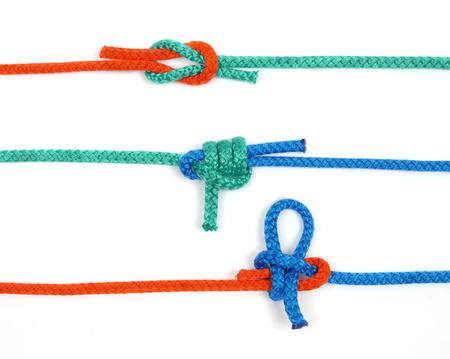There is no clear answer to the question of how a concrete attachment style develops in a person and for what reasons.
Various studies have shown that there is a slight connection between the style of attachment in childhood and the style of attachment one has later as an adult. In the past, research has tried to find out how a "secure attachment style" develops. A caring and sensitive mother-child or father-child relationship plays an important role. But a "secure" relationship quality alone is not enough to predict whether the child will have a dominant secure attachment style later as an adult. That is what John Bowlby, one of the founding fathers of attachment theory, thought. Research could only partially confirm him.
Find out your attachment style!
And find out how well your partner's attachment style fits to yours!
Various factors, but unclear how they interact
Other studies attempted to establish a link between different genetic factors and the attachment style. Here, too, certain correlations can be demonstrated.
All in all, a whole mosaic of factors plays a role. The temperament of the child joins the genetic factors mentioned above. If the child is rather calm or cannot be upset so quickly, then the "secure" answers given by the parents can be better accepted and the child makes more out of them. On the other hand, even nervous parents find it easier to offer a calm child security.
Deactivation or hyperactivation versus basically secure mode
According to Mikulincer et al. (Attachment in Adulthood, 2016) it seems almost certain, however, that in the first years of life a kind of prototype of the inner "working model" is defined in humans, which contains the most important assumptions and convictions about closeness, relationship and self-other perceptions. This prototype is quite open to change on the basis of experience, but it remains a kind of "default model", which probably always serves as a fall-back for the later adult human being.
This default model determines, among other things, whether a person tends to "hyperactivate" his attachment system (anxious type) or to "deactivate" it (avoidant type). Both hyperactivation and deactivation are ways for the innate attachment system to signal to the attachment partner any perceived threats to the feeling of security in close relationships.
The secure attachment style is that which neither hyperactivates nor deactivates, because it experiences less frequently threats to its sense of security in close relationships than the other two attachment styles. And if it does then it assumes much more spontaneously that the partner will be there to provide shelter, to offer comprehension and help soothe a pain experienced.
Does the attachment style remain the same forever?
It may well be that you will keep the same attachment style throughout your life. In fact, this is very likely because a two-thirds of all adults will stick to their attachment style and change it little. Unless, of course, they have to or want to do so in order to grow in their relationship or to save it.
People who have a lot of anxious elements in their attachment style can partially compensate through a few secure elements which they can use to make up for this. Also, avoidant persons are not only avoidant, but may have some secure elements to offer. And mostly secure individuals have here and there an avoidant and perhaps some anxious reaction patterns. Therefore, the specific attachment style of a person is not just a personality trait. It is also a reaction to the respective partner. You can test your attachment style and that of your (dating) partner online.
Adult attachment is self-chosen emotional dependence aimed at going through life stronger together. It is strongly rooted in the experiences of childhood with the caregivers at that time and has an innate foundation. Adult attachment is when I feel responsible for my partner's emotional well-being and vice versa my partner for mine. Attachment is a reciprocal emotional home that I get as much from my partner as I give it to him or her. It is the secure base from which I return "into the world outside", and it is the safe haven where I seek shelter when it is stormy "in the world outside".
Attachment styles can change!
Research has shown that more than one third of adults change their attachment style due to specific attachment experiences. It is therefore possible that an originally secure attachment type may become avoidant or anxious. It is also possible that an avoidant type may allow much more closeness due to a partnership experience and become more secure. Finally, it is also possible that an original avoidant individual may become more anxious.
Thanks to this relative flexibility, desirable changes can be targeted: It is therefore possible to learn to reduce an excess of deactivations (avoidances), just as it is possible to learn to basically calm down one's attachment system (reducing hyperactivations).
{slider Literature}
A. Levine, R. Heller (2010): Attached. The New Science of Adult Attachment and How It can Help You Find - and Keep - Love. (Paperback Edition: 2011). Penguin.
J. Bowlby (1988): A secure base: Clinical Applications of attachment theory. London: Routledge.
John Bowlby (1982): Das Glück und die Trauer, Herstellung und Lösung von affektiver Bindung. Konzepte der Humanwissenschaften. Klett-Cotta
M. Mikulincer, P. R. Shaver (2016): Attachment in Adulthood (second edition). Structure, Dynamics and Change. The Guilford Press. NY
Grossmann/Grossmann (2004): Bindungen - das Gefüge psychischer Sicherheit. Klett-Cotta.
{/sliders}



